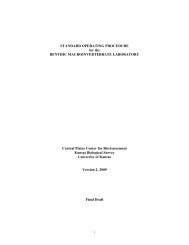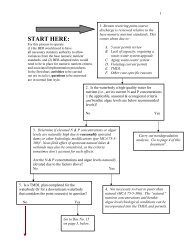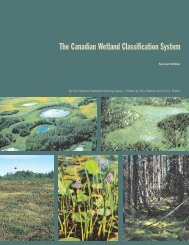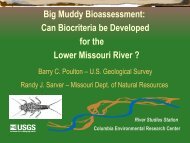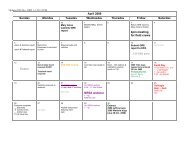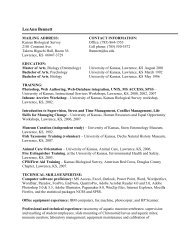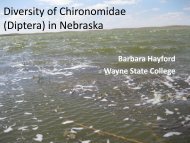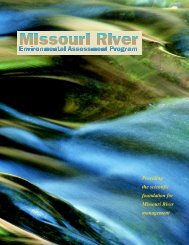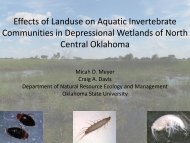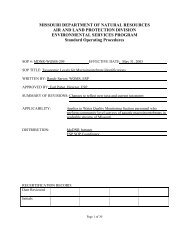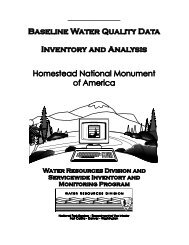Koontz, J., D.G. Huggins, C.C. Freeman, D.S. Baker - Central Plains ...
Koontz, J., D.G. Huggins, C.C. Freeman, D.S. Baker - Central Plains ...
Koontz, J., D.G. Huggins, C.C. Freeman, D.S. Baker - Central Plains ...
Create successful ePaper yourself
Turn your PDF publications into a flip-book with our unique Google optimized e-Paper software.
Evidence that waterfowl and/or amphibians are present or would be present during the migratory<br />
season, suggests the wetland is capable of providing wildlife habitat, including food and nesting<br />
cover.<br />
Endangered or Threatened Species warrant further protection of the area under federal laws and<br />
would thus generally discourage disturbance.<br />
Interspersion (Mack 2001) refers to natural non-uniformity in wetland habitat design. Some<br />
native wetland species require multiple habitat-types. If these habitat-types are not in close<br />
proximity to one another, or interspersed throughout the wetland area, then it may be difficult for<br />
such species to survive. The assumption is that between two wetlands of the same size and with<br />
the same proportions of open-water to vegetated habitat, the one exhibiting the greatest<br />
interspersion of habitats likely will support greater native wetland biodiversity and will be more<br />
similar to a „reference‟ state.<br />
Connectivity refers to a wetland‟s functional and structural connection to other landscape and<br />
hydrologic features. Features that disrupt connectivity, such as river or stream impoundments,<br />
levees, berms, or other water structures, can be easily identified on a local level and indicate<br />
disruptions to historical hydrologic regimes. It is more difficult to assess broad-scale and<br />
cumulative hydrological impacts to floodplain wetlands since at some scale nearly all floodplains<br />
and riverine systems have become hydrologically altered to some degree. This assumes most<br />
floodplain wetlands were originally connected to the river or that water was able to cycle<br />
between these systems intermittently.<br />
Disturbance<br />
Metrics that indicate human disturbances known to degrade wetland health are listed in this<br />
section of the Disturbance Assessment. For each disturbance a point is subtracted. If the<br />
disturbance is unusually severe or at a high rate of occurrence, then more than one point can be<br />
subtracted.<br />
Sedimentation is a natural process for wetlands in the Missouri River floodplain, however<br />
modern land use changes that affect the spatial and temporal extent of permanent ground cover<br />
can accelerate soil loss and increased sedimentation (observed as plumes or fresh deposits within<br />
wetlands) that dramatically affect the structure and function of wetlands. Scoring the extent of<br />
wetland sedimentation is not dependant on the identification of anthropogenic or natural causes.<br />
Upland soil disturbance or tillage in the immediate area drained by the wetland is scored<br />
separately as a local disturbance that demonstrates the potential for excessive sedimentation,<br />
although it may not be observable at the time of evaluation.<br />
The presence of cattle is not considered a natural occurrence, even in circumstances where the<br />
cattle graze the wetland periodically throughout the year.<br />
Excessive algae usually suggest an imbalance within an aquatic ecosystem (i.e. excessive<br />
nutrients or eutrophication). Regardless of whether the cause is fertilizer run-off, sediment<br />
resuspension, or cattle, the presence of excessive algae can impede the growth of<br />
aquatic/emergent plant life and threatens the survival of some aquatic organisms.<br />
13 of 84



